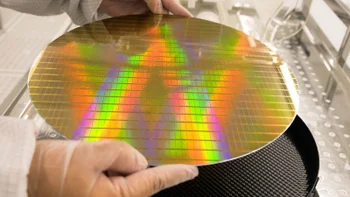Gordon Moore, whose observation about transistors led to the PC and Smartphone revolutions, dies

Gordon Moore, the man who co-founded two heavyweight semiconductor companies and came up with the observation known as Moore's Law, passed away late Friday in Hawaii at the age of 94. Moore co-founded Fairchild Semiconductors and another U.S. chip designer that you might have heard of...Intel. Even with these achievements, it was a simple observation made by Moore that was his claim to fame. That observation is known as Moore's Law and we refer to it from time to time at PhoneArena.
Moore's observation about transistor counts in microchips became Moore's Law
What Moore saw was a trend that resulted in the number of transistors used on microchips doubling every year. Moore first made this observation in 1965 and predicted that the trend would continue in the future. He did make one change in 1975 when he said that the number of transistors used on microchips would double every other year. Moore's Law was used as a guide by chip makers who started to design their chips with Moore's observation in mind making it a self-fulfilling prophecy of sorts.


The original observation was made in an article Moore wrote for Electronics Magazine titled, "Cramming More Components onto Integrated Circuits." The article was found in the April 19, 1965 edition, and in it, Moore wrote that "the complexity for minimum component costs has increased at a rate of roughly two per year."
In the same article, Moore wrote, "Integrated circuits will lead to such wonders as home computers - or at least terminals connected to a central computer - automatic controls for automobiles, and personal portable communications equipment." This forecast was made twenty years before the PC revolution and more than four decades before Steve Jobs held the iPhone aloft in his hand at Macworld in 2007.
In 2005, Moore said, "It sure is nice to be at the right place at the right time. I was very fortunate to get into the semiconductor industry in its infancy. And I had an opportunity to grow from the time where we couldn't make a single silicon transistor to the time where we put 1.7 billion of them on one chip! It's been a phenomenal ride." That was 18 years ago. Today, the A16 Bionic chip that Apple uses to power the iPhone 14 Pro series contains 16 billion transistors. The higher a chip's transistor count, the more powerful and energy-efficient it is.
There's no doubt that consumers who need their mobile devices owe a debt of gratitude to Moore. Morris Chang, founder of the world's largest foundry, TSMC, mourned the passing of his friend of sixty years. "With Gordon gone, almost all of my first generation semiconductor colleagues are gone," Chang said.
While they no longer double every other year, transistor counts continue to rise
According to Reuters, Moore was the engineer who kept working to improve transistor design. Transistors can be considered the building blocks of electronic devices and they are used to control the flow of current and can amplify this flow. Moore was CEO and Chairman of Intel from 1979 to 1987 and he remained chairman until 1997. Earlier this year, Forbes estimated Moore's net worth at $7.2 billion.
While transistor counts don't automatically double every other year, the trend to fit more transistors into integrated circuits continues. In 2019, the iPhone 11 series used the A13 Bionic which contained 8.5 billion transistors. The A14 Bionic inside the iPhone 12 line contained 11.8 billion transistors. That rose to 15 billion transistors for the A15 Bionic employed by the iPhone 13 series, and to 16 billion for the A16 Bionic used by the iPhone 14 Pro and iPhone 14 Pro Max.
This year, Apple will debut the first consumer product powered by a chip produced by TSMC's new 3nm process node, the A17 Bionic. Apple is expected to have designed the chipset to carry 20 billion to as many as 24 billion transistors inside. While Moore's Law doesn't strictly apply anymore, it did for several years and the fact that the number of transistors inside chips continues to rise is still considered a sign that this law has not been repealed.










Things that are NOT allowed: